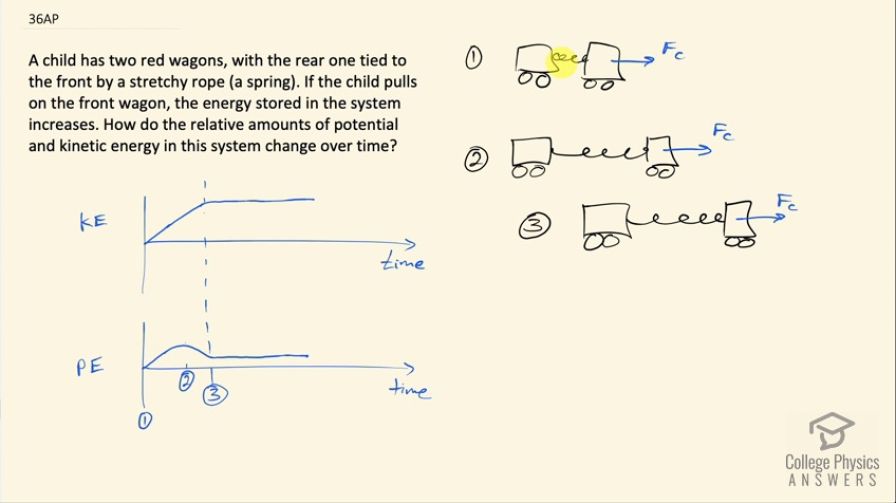Question
A child has two red wagons, with the rear one tied to the front by a stretchy rope (a spring). If the child pulls on the front wagon, the energy stored in the system increases. How do the relative amounts of potential and kinetic energy in this system change over time?
Final Answer
Please see the solution video.
Solution video
OpenStax College Physics for AP® Courses, Chapter 7, Problem 36 (Test Prep for AP® Courses)

vote with a rating of
votes with an average rating of
.
Video Transcript
This is College Physics Answers with Shaun Dychko. Initially when the two wagons are at rest, the child is pulling on the front wagon and there's no kinetic or potential energy yet but the only wagon that's going to move in the beginning is this front wagon because the spring needs to be stretched in order for it to exert much force on the back wagon and so there's a small increase in kinetic energy due only to the front wagon moving and also an increase in elastic potential energy as the spring is being stretched. So this is position two here the spring finally gets stretched to the point where the back wagon begins to move and then after that, the spring will compress a little bit and lose some of its potential energy until it gets to a stretch such that it is exerting the same force on the back wagon as is being exerted on the front wagon and the spring will be stretched for a bit and it's gonna have some elastic potential energy and there's gonna be some constant amount of kinetic energy as the friction force is balancing the force exerted by the child and the carts are both moving together at the same constant speed.